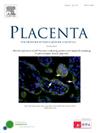Fetal aorta assessment and cardiovascular biophysical indices in small for gestational age fetuses
IF 2.5
2区 医学
Q2 DEVELOPMENTAL BIOLOGY
引用次数: 0
Abstract
Background
Cardiovascular disease ranks among the foremost causes of morbidity in adults and recent studies indicate that the process of atheromatosis appears to commence as early as fetal life. This study examined differences in several fetal aorta parameters between AGA and SGA fetuses.
Methods
This was a prospective cohort study that included a total of 198 women with singleton pregnancies, assessed between 31 and 34 weeks of gestation. Each fetus underwent a thorough assessment of its biometry and its Doppler indices. Concomitant examination of the fetal abdominal aorta diameter, aortic isthmus and aortic intima media thickness was included.
Results
AO D was significantly lower, while UA PI was significantly greater in SGA fetuses. The unadjusted regression coefficient of AO D on EFW centile was 1.33 while after adjusting for gestational age, UA PI and UtA PI it continued to be significantly associated with EFW centile (β = 1.49). The unadjusted regression coefficient of UA PI on EFW centile was −0.55 and after adjusting for gestational age and Ut A PI, it remained statistically significant and was demonstrated to be −0.60. Greater AO D was significantly associated with lower probability of EFW <10th centile (OR = 0.87) and it remained significant after adjusting for gestational age and UtA PI (OR = 0.82).
Conclusions
The study demonstrated that AO D was significantly lower while UA-PI appeared significantly increased in SGA fetuses, remaining as such even after the appropriate adjustment. However, the study did not manage to show alterations in the rest of the fetal abdominal aorta measurements.
小胎龄胎儿主动脉评估及心血管生物物理指标
背景:心血管疾病是成人发病的主要原因之一,最近的研究表明动脉粥样硬化的过程似乎早在胎儿时期就开始了。本研究检查了AGA和SGA胎儿的几个胎儿主动脉参数的差异。方法:这是一项前瞻性队列研究,共纳入198名单胎妊娠妇女,评估时间在妊娠31至34周之间。每个胎儿都接受了生物测量和多普勒指数的全面评估。同时检查胎儿腹主动脉直径、主动脉峡部和主动脉内膜中层厚度。结果SGA胎儿的sao D显著降低,UA PI显著升高。aod对EFW百分位数的未校正回归系数为1.33,而在调整胎龄、UA PI和UtA PI后,aod仍与EFW百分位数显著相关(β = 1.49)。未调整的UA PI对EFW百分位数的回归系数为- 0.55,在调整胎龄和Ut A PI后,仍具有统计学意义,为- 0.60。较大的AO D与较低的EFW和lt概率显著相关(OR = 0.87),并且在调整胎龄和UtA PI后仍然显著(OR = 0.82)。结论SGA胎儿AO D明显降低,UA-PI明显升高,经适当调整后仍保持不变。然而,这项研究并没有设法显示胎儿腹主动脉测量的其余部分的变化。
本文章由计算机程序翻译,如有差异,请以英文原文为准。
求助全文
约1分钟内获得全文
求助全文
来源期刊

Placenta
医学-发育生物学
CiteScore
6.30
自引率
10.50%
发文量
391
审稿时长
78 days
期刊介绍:
Placenta publishes high-quality original articles and invited topical reviews on all aspects of human and animal placentation, and the interactions between the mother, the placenta and fetal development. Topics covered include evolution, development, genetics and epigenetics, stem cells, metabolism, transport, immunology, pathology, pharmacology, cell and molecular biology, and developmental programming. The Editors welcome studies on implantation and the endometrium, comparative placentation, the uterine and umbilical circulations, the relationship between fetal and placental development, clinical aspects of altered placental development or function, the placental membranes, the influence of paternal factors on placental development or function, and the assessment of biomarkers of placental disorders.
 求助内容:
求助内容: 应助结果提醒方式:
应助结果提醒方式:


